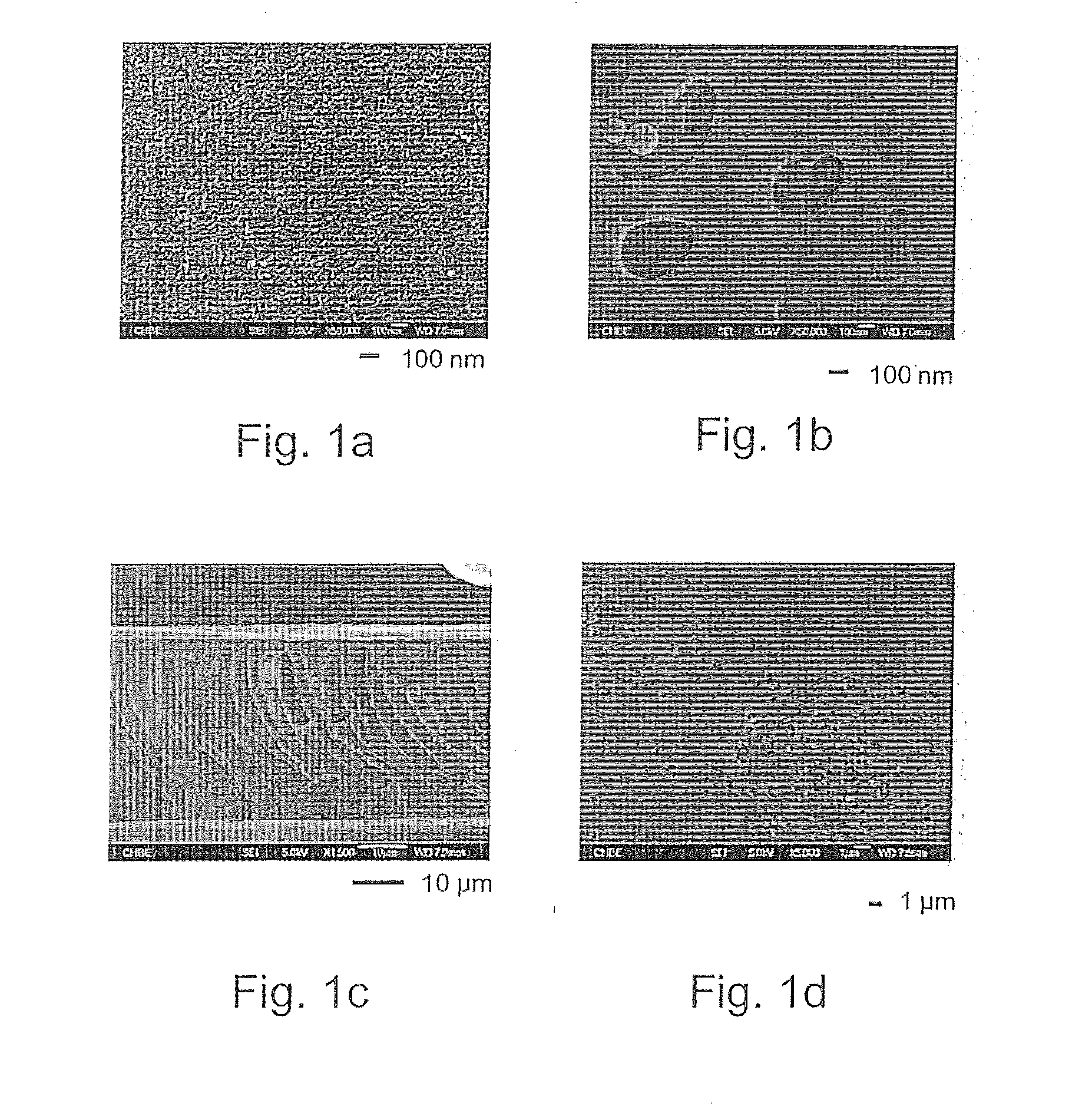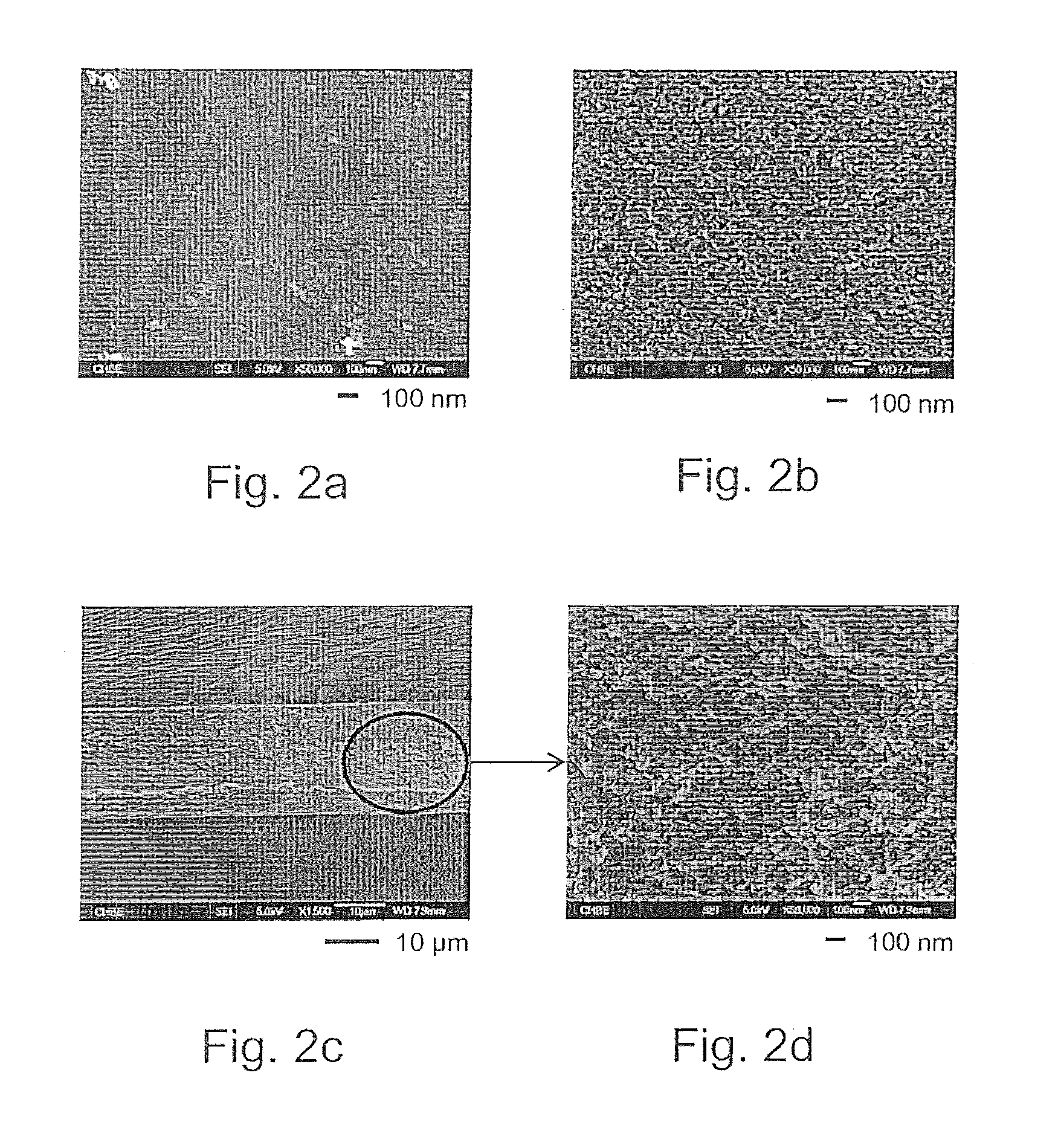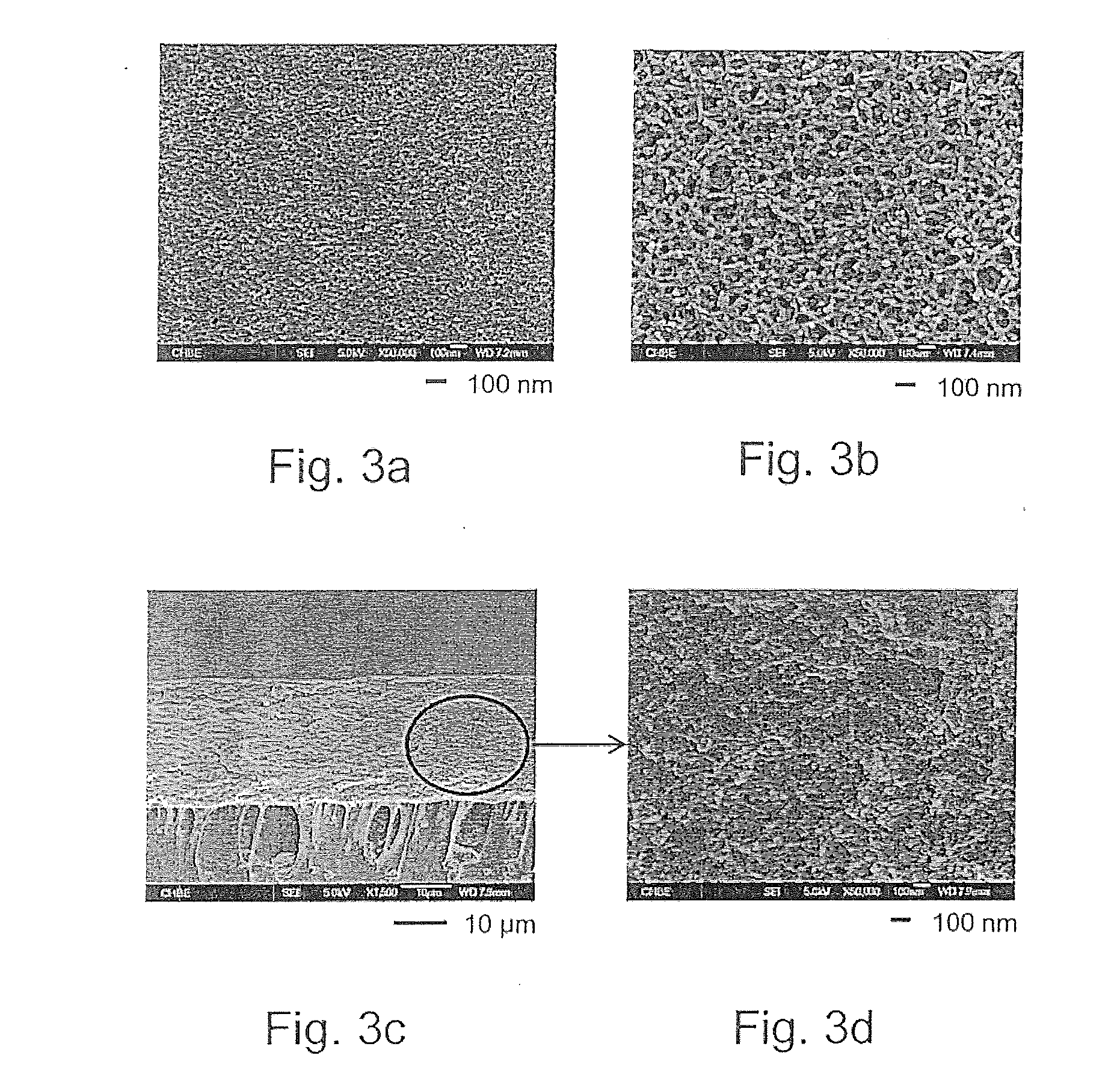Composite membranes comprising sulfonated polyphenylenesulfone and their use in forward osmosis processes
a technology of sulfonated polyphenylenesulfone and composite membrane, which is applied in the direction of solvent extraction, separation process, filtration separation, etc., can solve the problems of insufficient water permeation and separation performance of known fo membranes, affecting feed solutions, and limited number of commercially available fo membranes, etc., to achieve superior performance and high water flux
- Summary
- Abstract
- Description
- Claims
- Application Information
AI Technical Summary
Benefits of technology
Problems solved by technology
Method used
Image
Examples
example 2
Production of Substrate Layer (S) Based on Sulfonated polyphenylensulfones sPPSU-2,5% and sPPSU-5%
[0219]N-methyl-2-pyrrolidone (NMP) from Merck and ethylene glycol (EG) from Sigma Aldrich were employed as the solvent and additive, respectively, in the fabrication of substrates. The composition of each dope solution was polymer / EG / NMP (wt %)=13 / 16 / 71.
[0220]Casting solutions were prepared by dissolving according amounts of polymers sPPSU 2.5% and sPPSU-5% as prepared in Example 1 in N-methyl pyrrolidone (NMP>99.5%) under addition of 16 wt % ethylene glycol (EG). The casting solutions were allowed to degas overnight prior casting. The polymer solutions were then cast on a glass plate via phase inversion method using casting knife of 100 μm in thickness to form a homogeneous membrane substrate.
[0221]Thereafter, the as-cast membrane substrate layer was immersed into a water coagulation bath immediately at room temperature to conduct solvent exchange process and to form a hydrophilic poro...
example 3
Production of Thin Film Composite (TFC) Membrane
[0234]The substrate (substrate layer (S)) based on sulfonated sPPSU-2.5% as produced in Example 2 was used for formation of a thin polyamide layer (film layer (F)). The formation of a polyamide layer onto the substrate layer was based on the interfacial polymerization. The substrate layer was first immersed in 2 wt.-% MPD (meta-phenylenediamine) solution in deionized water (DI water) for 2 minutes. Thereafter, filter paper was used to remove the water droplets on the membrane surface. Subsequently, the top surface of the membranes was brought into contact with the 0.05 wt.% TMC (trimesoylchloride) solution in n-heptane for 15 seconds. After this process, a thin polyamide film (film layer (F)) was formed on the substrate layer (S). The resultant membrane (thin film composite membrane TFC) was further dried in the air for 10 minutes and cleaned in deionized water before use in forward osmosis processes (FO) (see Example 4).
[0235]The morp...
example 4
Forward Osmosis Process using Inventive Thin Film Composite Membrane
[0238]The thin film composite membrane produced as described in Example 3 based on sPPSU-2.5% was tested in a forward osmosis (FO) experiment.
[0239]FO experiments were conducted on a lab-scale circulating filtration unit. The schematic diagram of the filtration unit is shown in FIG. 5.
[0240]The crossflow permeation cell (1) was a plate and frame design with a rectangular channel on each side of the membrane. The feed solution (2) and the draw solution (3) were in storage tanks and circulated via pumps (5). The solution flows were adjusted using flow meters (4). The solution flow velocities during the FO process were kept at 6.4 cm / s for both feed solution (2) and draw solution (3) which was co-currently flowed through the cell channels. The temperature and the pressure of each solution were measured (6). The temperatures of the feed and draw solutions were maintained at 22±0.5° C. The pressures at two channel inlets...
PUM
| Property | Measurement | Unit |
|---|---|---|
| Concentration | aaaaa | aaaaa |
Abstract
Description
Claims
Application Information
 Login to View More
Login to View More - R&D
- Intellectual Property
- Life Sciences
- Materials
- Tech Scout
- Unparalleled Data Quality
- Higher Quality Content
- 60% Fewer Hallucinations
Browse by: Latest US Patents, China's latest patents, Technical Efficacy Thesaurus, Application Domain, Technology Topic, Popular Technical Reports.
© 2025 PatSnap. All rights reserved.Legal|Privacy policy|Modern Slavery Act Transparency Statement|Sitemap|About US| Contact US: help@patsnap.com



